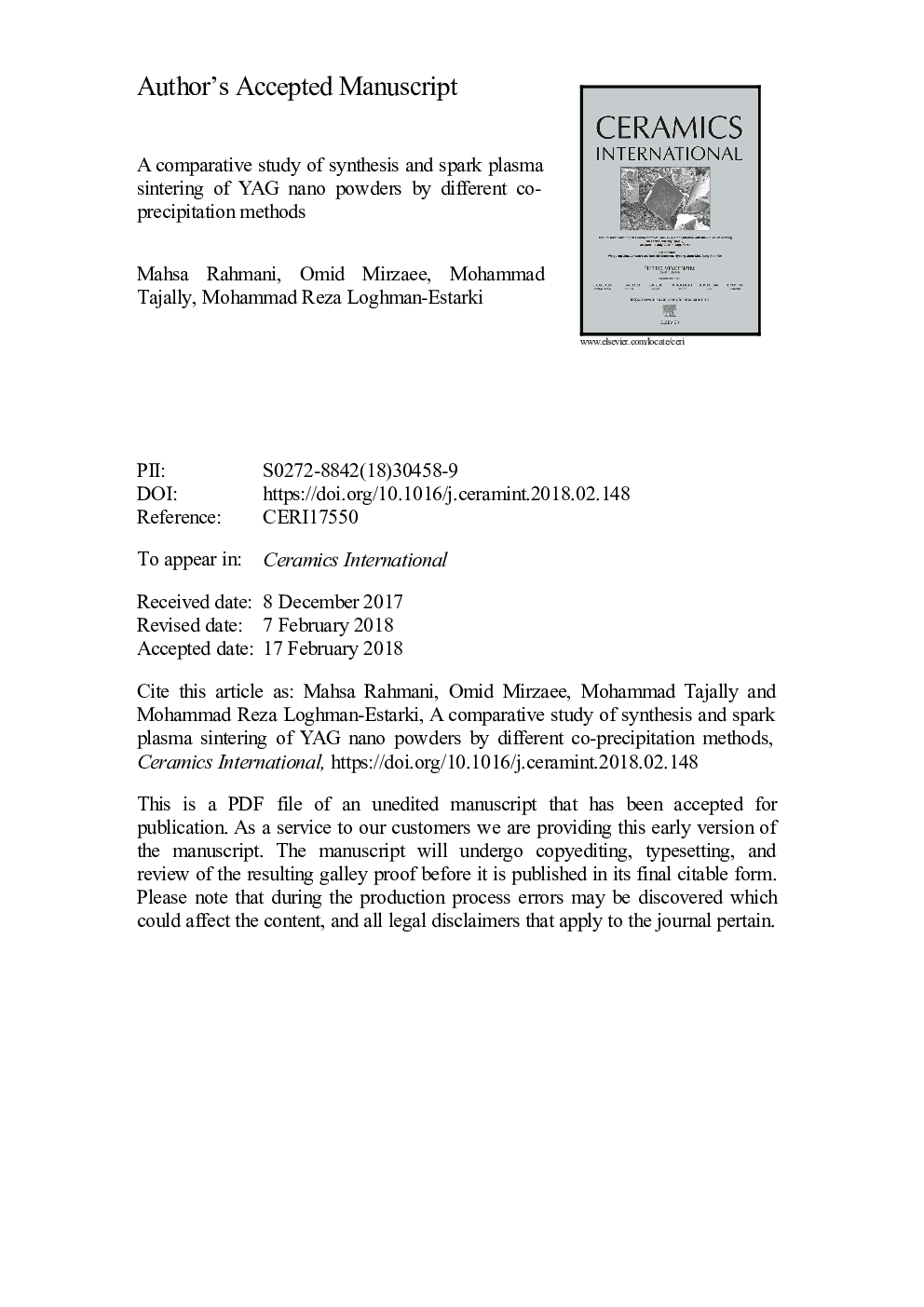| Article ID | Journal | Published Year | Pages | File Type |
|---|---|---|---|---|
| 7886825 | Ceramics International | 2018 | 40 Pages |
Abstract
Pure yttrium-aluminum-garnet (YAG) nano particles were synthesized via normal and reverse co-precipitation methods using nitrate starting solutions and ammonium hydrogen carbonate (AHC) as precipitator agent. The impact of titration method on the phase evolution, thermal behavior, precipitate's composition, morphology and chemical bonds of powders were studied by XRD, TG-DTA, FTIR, FESEM, TEM, EDS and BET analysis. The results revealed that in the normal method, the precipitates were composed of relatively dense particles compared with more homogenous fluffy precipitates with higher carbonate content obtained by the reverse method. The precursors achieved by the reverse method formed less agglomerated and smaller size YAG powders after calcination at 900â¯Â°C. Calcined nano powders were processed by spark plasma sintering (SPS) technique at 1350â¯Â°C for 10â¯min without any sintering aids or dispersive agents. The sintering of both powders led to a highly dense and fine submicron-structured YAG ceramic. However, the YAG ceramic produced by SPS of reverse co-precipitated nano powders showed higher transparency (43% at 680â¯nm and 58% in near-infrared range) and finer micro-structure (about 210â¯nm in grain size) as compared with normal co-precipitated nano particles.
Keywords
Related Topics
Physical Sciences and Engineering
Materials Science
Ceramics and Composites
Authors
Mahsa Rahmani, Omid Mirzaee, Mohammad Tajally, Mohammad Reza Loghman-Estarki,
